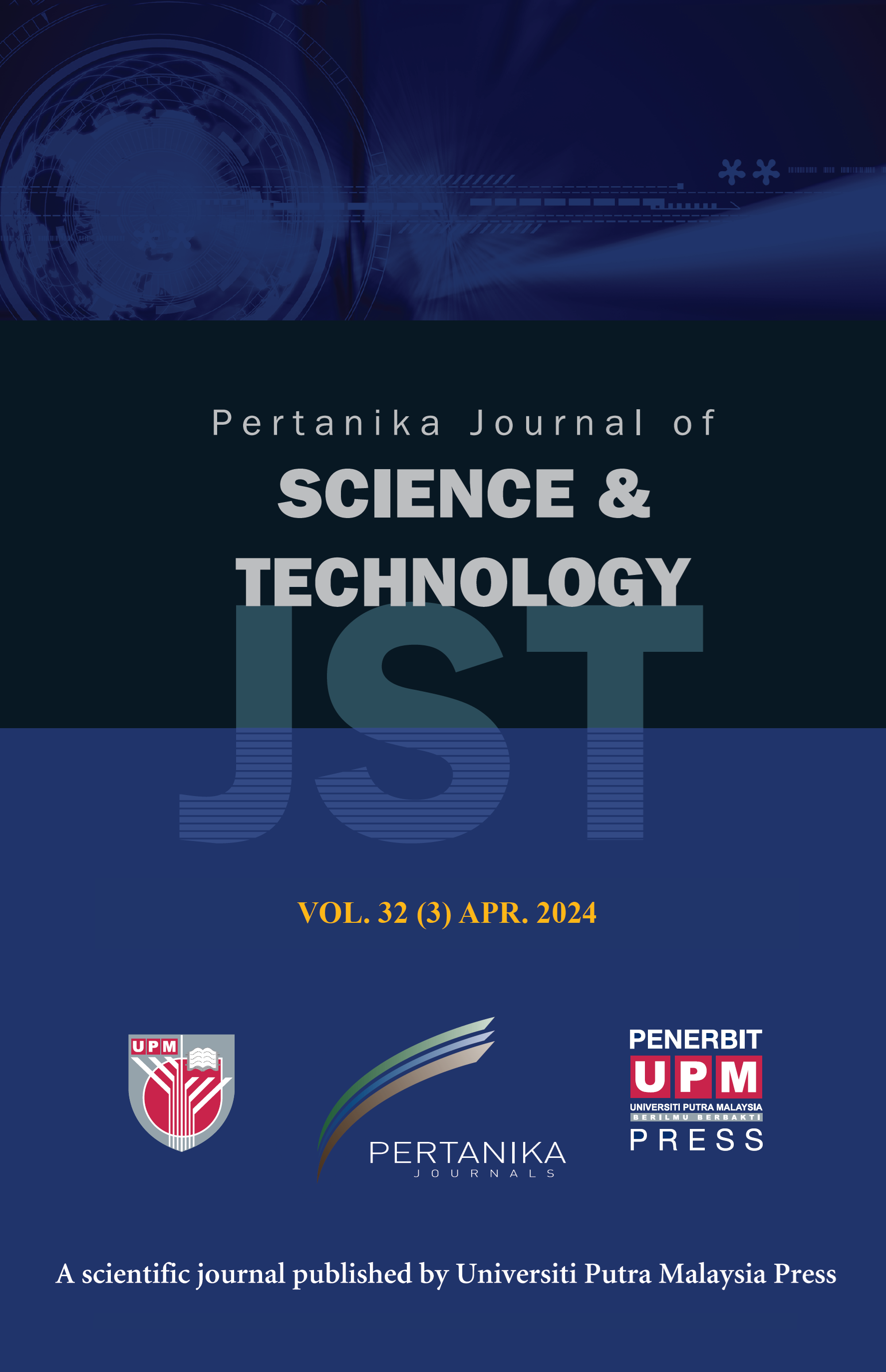PERTANIKA JOURNAL OF SCIENCE AND TECHNOLOGY
e-ISSN 2231-8526
ISSN 0128-7680
Flood-Modeling and Risk Map Simulation for Mae Suai Dam-Break, Northern Thailand
Anurak Busaman, Somporn Chuai-Aree, Salang Musikasuwan and Rhysa McNeil
Pertanika Journal of Science & Technology, Volume 29, Issue 1, January 2021
DOI: https://doi.org/10.47836/pjst.29.1.35
Keywords: Dam break, modeling, polynomial function, shallow water equations, simulation
Published on: 22 January 2021
Dam-break floods are a serious disaster. This study aims to simulate and model the Mae Suai dam-break flood using shallow water equations (SWE) with an adaptive tree grid finite volume method, and determine the relationship between the initial water levels in the dam and the simulation results set regarding arrival times and maximum water depths using a polynomial model. We used elevation data obtained from the Shuttle Radar Topography Mission. The method was evaluated using the Xe-Pian dam-break flood simulation. The numerical results of water propagation was in agreement with the satellite image. The SWE and numerical algorithm was then used for the Mae Suai dam-break flood simulation. The numerical solution sets were approximated by a polynomial function of appropriate degree for flood arrival times and maximum water depth. Comparisons showed that the polynomial model results were similar to the SWE results; however, the proposed method was more efficient and can obtain a flood risk map without the need to fully solve the SWE. The method can also be applied for dam-break flood simulations and models in other regions using information from the dam.
-
Audusse, E., Buchut, F., Bristeau, M. O., Klein, R., & Perthame, B. (2004). A fast and stable well-balanced scheme with hydrostatic reconstruction for shallow water flows. SIAM Journal on Scientific Computing, 25(6), 2050-2065. doi: 10.1137/S1064827503431090
-
Busaman, A. (2014). Dynamically adaptive tree grid technique for flood simulation (Doctoral thesis). Chulalongkorn University, Bangkok, Thailand.
-
Busaman, A., Mekchay, K., Siripant, S., & Chuai-Aree, S. (2015). Dynamically adaptive tree grids modeling for simulation and visualization of rain-water overland flow. International Journal for Numerical Methods in Fluids, 79(11), 559-579. doi: https://doi.org/10.1002/fld.4064
-
Cushman-Roisin, B., & Beckers, J. M. (2011). Introduction to geophysical fluid dynamics: Physical and numeric aspects. Oxford, UK: Academic Press.
-
Dat, T. T., Tri, D. Q., Truong, D. D., & Hoa, N. N. (2019). Application of mike flood model in inundation simulation with the Dam-break Scenarios: A case study of Dak-Drinh Reservoir in Vietnam. International Journal of Earth Sciences and Engineering, 12(01), 60-70. doi: 10.21276/ijee.2019.12.0106
-
Delestre, O., Cordier, S., James, F., & Darboux, F. (2008, June 9-13). Simulation of rain-water overland-flow. In Proceedings of the 12th International Conference on Hyperbolic Problems (pp. 537-546). University of Maryland, College Park, USA.
-
George, D. L. (2011). Adaptive finite volume methods with well‐balanced Riemann solvers for modeling floods in rugged terrain: Application to the Malpasset dam‐break flood (France, 1959). International Journal for Numerical Methods in Fluids, 66(8), 1000-1018. doi: https://doi.org/10.1002/fld.2298
-
Gong, L. (2018). Laos dam collapse: Regional response. Khmer Times. Retrieved August 23, 2019, from https://www.khmertimeskh.com/525750/laos-dam-collapse-regional-response
-
Goodman, R. (2013). On the failure of Malpasset Dam. AEG Shlemon specialty Conference: Dam failures and incidents. Denver, Colorado: Association of Environmental and Engineering Geologists.
-
Hagen, T. R., Hjelmervik, J. M., Lie, K. A., Natvig, J. R., & Henriksen, M. O. (2005). Visual simulation of shallow water waves. Simulation Modelling Practice and Theory: Special Issue on Programmable Graphics Hardware, 13(8), 716-726. doi: https://doi.org/10.1016/j.simpat.2005.08.006
-
Hunukumbura, P. B., Weerakoon, S. B., & Herath, S. (2007). Development of a cell-based model to derive direct Runoff Hydrgraphs for Ungauged mountainous basins. Journal of Mountain Science, 4(4), 309-320. doi: https://doi.org/10.1007/s11629-007-0309-8
-
Latrubesse, E. M., Park, E., Sieh, K., Dang, T., Lind, Y. N., & Yun, S. (2020). Dam failure and a catastrophic flood in the Mekong basin (Bolaven Plateau), southern Laos, 2018. Geomorphology, 362, 1-16. doi: https://doi.org/10.1016/j.geomorph.2020.107221
-
NOAA. (2005). Taum Sauk dam failure December 15th 2005. National Weather Service St. Louis Missouri. Retrieved December 1st, 2019, from https://www.weather.gov/media/lsx/Events/12_15_2005.pdf
-
Yamaguchi, S., Ikeda, T., Iwamura, K., Naono, K., Ninomiya, A., Tanaka, K., & Takahashi, H. (2007, September 4-5). Development of GIS-based flood-simulation software and application to flood-risk assessment. In 2nd IMA International Conference on Flood Risk Assessment (pp. 4-5). University of Plymouth, UK.
-
Zanotti, O., & Manca, G. M. (2010). A very short introduction to Godunov methods. Caen, France: Lecture Notes for the COMPSTAR School on Computational Astrophysics.
ISSN 0128-7680
e-ISSN 2231-8526




